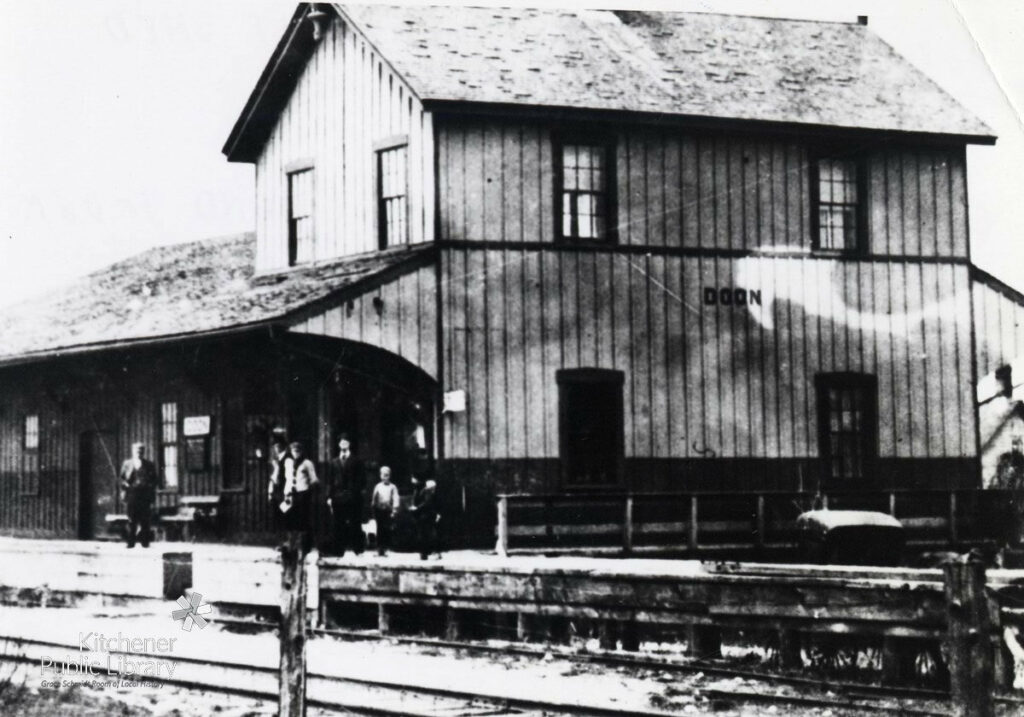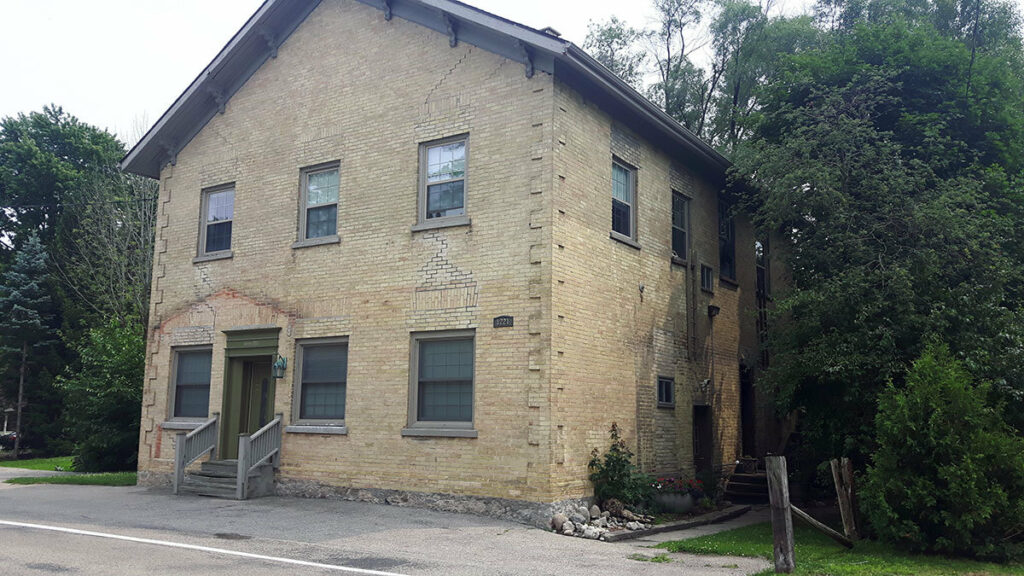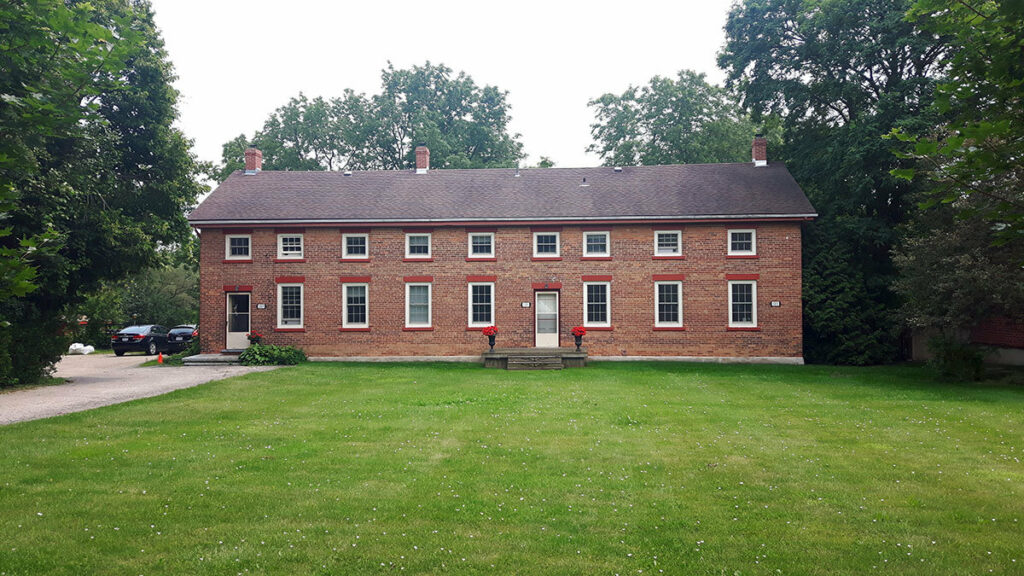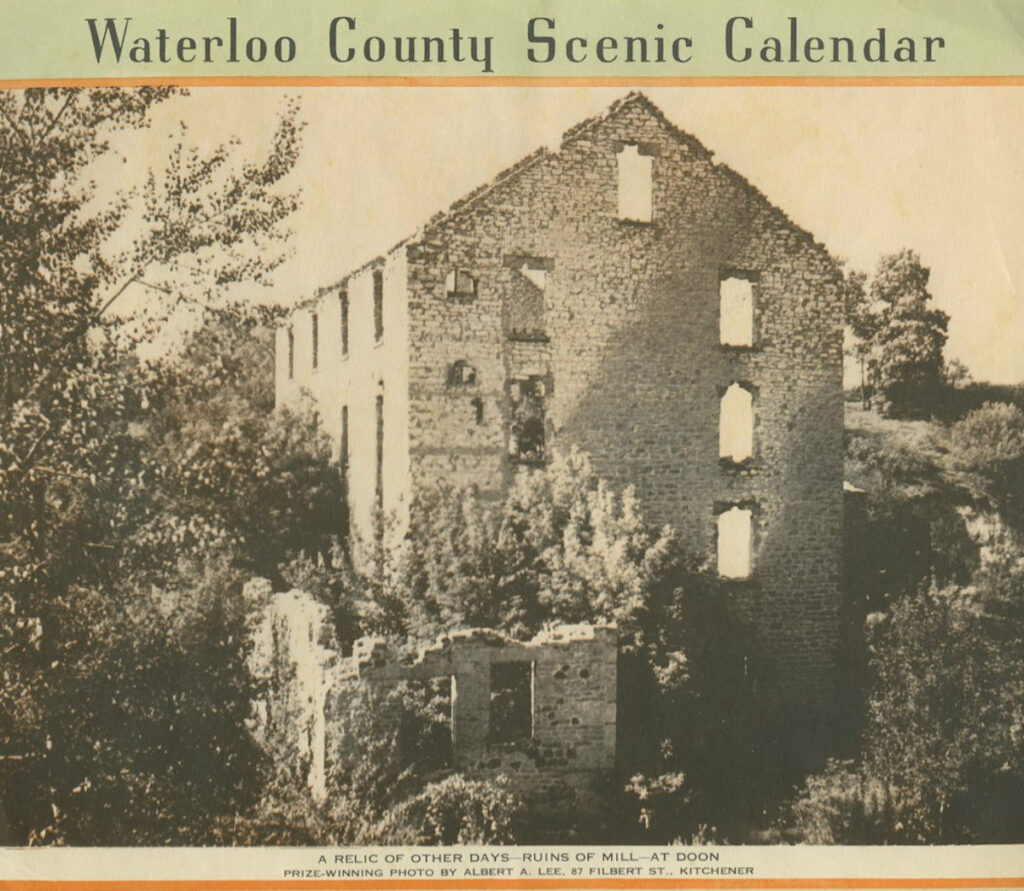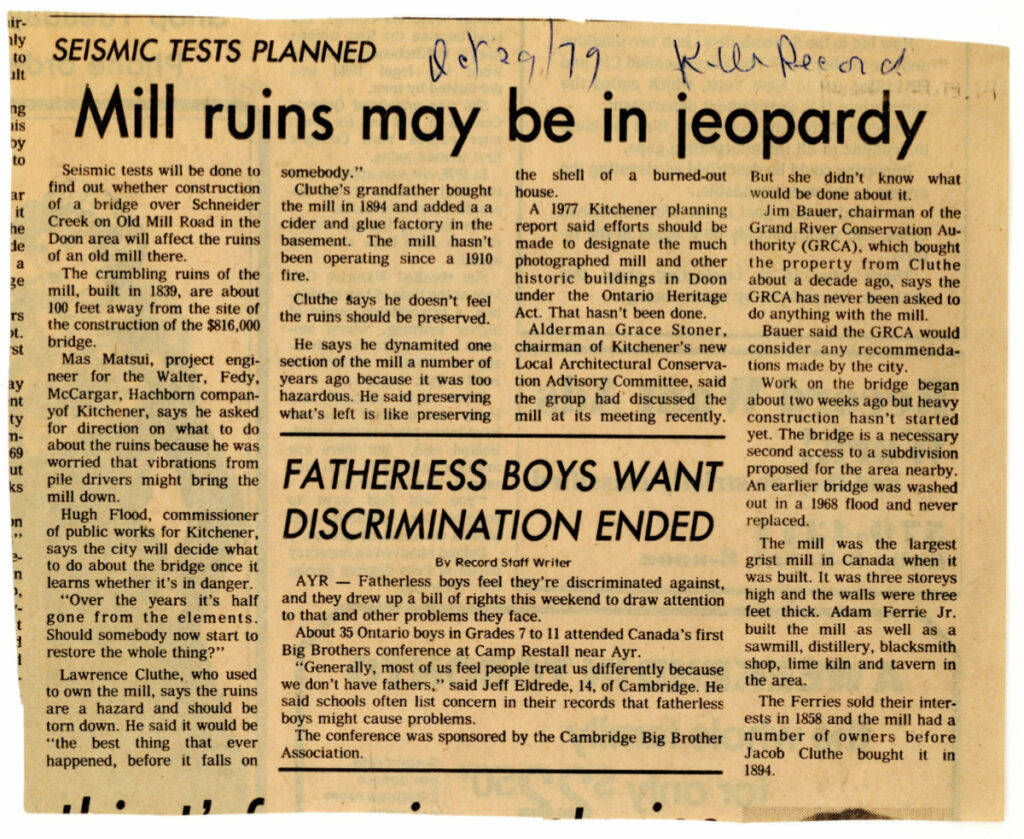Local History: Business, Industry and Transport in Doon
The Grand Trunk Railway
The Grand Trunk Railway was a major railway that connected Toronto to Montreal, beginning operation in 1852. An extension to Berlin (modern day Kitchener) was added in 1856 with a small station at Weber and Victoria streets, allowing for more access to larger cities from rural areas.[1] A Doon station was added in 1867.[2]
Homer Watson frequently used the train to get around the Waterloo region as well as Toronto Ottawa, and Montreal. When the Canadian National Railway considered “doing away” with the Doon Station, Homer supported a petition to have it kept – stating that it’s loss would be a “hardship and inconvenience to the residents of the county round about”[3] Despite these efforts, the station was closed around the end of Homer’s life in the 1930s.
The Doon Twine and Cordage Company
The Doon Twine and Cordage Company was founded by the Perine Brothers in 1853. The company was located in Upper Doon, which was called “Tow Town” during this period. The Perines’ mill was the first of its kind in Canada to produce twine, rope, and curtain cordage.[4]
The company was purchased in 1906 by industrialist Hartman Krug, who moved the operation to Kitchener in 1916.[5] Doon Twines and Canada Cordage were amalgamated in 1979, and still operates today as Canada Cordage Inc.[6]
Doon Twines Boarding House
The Doon Twines boarding house was a two-story structure built in 1880 known as “The Terrace”. It was made to accommodate the workers that were brought over from Europe to work in the mills, and the structure features a side gable, terracotta red brick, and three chimneys.[7] The building still stands today as a private residence.
Doon Mills
The Doon Mills finished construction in 1839, several years after Adam Ferrie Jr. had originally purchased the land in 1834 from John Biehn. The mill complex and dam are described by Ferrie’s father in his autobiography:
The front of the dam was built was built of hewn stone, with a wide cart-road behind it, and the embankment to slope to the bottom of what was to form the lake or reservoir at an angle of 45 degrees. The width of this immense mound was 400 feet. The expense of building and filling it was enormous. When it was finished the water was let in and it formed a lake a quarter of a mile long. Not a leak appearing, it was thought safe to proceed with the building of mills for flour, barley, and oatmeal, and sawmill and distillery. These were all built in hewn rubble work, and such was the expense together with the necessary dwelling house and cooperage, that the people around the neighborhood were significantly shaking their heads…[8]
Despite the incredible cost and amount of work that went into its construction, the dam burst only a year later, in 1840. The lake emptied within ten minutes and the flow was strong enough to carry stone buildings up to a mile downstream.[9] This disaster is said to have been called the “vengeance of God”[10] by Ferrie and was apparently the inspiration for Homer Watson’s painting The Floodgate. Homer’s niece Jane Van Every claims that her uncle witnessed the event as a child[11], but the artist wouldn’t be born until 1855. Even though he didn’t see it firsthand, the story would have lived on through the area for many years.
From then on, the mill exchanged hands several times. Adam Ferrie Jr. struggled to run the mill and it was taken over by his son, Robert. Afterwards, it was sold by the Bank of Commerce in 1867 at auction to George Pattinson, who continued the grist, oatmeal, and barley operation.[12] Jacob Detweiler owned the mill in 1874, T.B. and A.B. Snider in 1884, and by 1893 it was sold to Charles Cluthe who began to use the mill for glue manufacturing.[13]
After a series of fires, the Doon Mill ceased operation around 1922.[14] Still in the Cluthe Family’s possession, the area surrounding the mill and reservoir was converted into Willow Lake. The lake was a popular summer leisure destination until a 1968 flood burst the dam, once again washing away parts of the mill.[15]
By the late 1970s, the crumbling ruins were beginning to become a hazard and safety concerns were brought up by residents and the city. The Grand River Conservation Authority eventually decided that it should be demolished and converted into a picnic area, but Kitchener City Council contributed $5000.00 to have some of it preserved.[16] In 1981, most of the mill was bulldozed.
[1] “Grand Trunk Station, Kitchener, Ontario”, Waterloo Public Library
[2] Bray Heritage, Lower Doon Land Use Study (Kingston: Bray Heritage, 2021)
[3] Page 73 of a notebook containing letters and drafts written by Homer Watson, Homer Watson House & Gallery Archives, Kitchener
[4] Elizabeth Bloomfield, Waterloo Township through Two Centuries (St. Jacobs: 1995), 201
[5] “Doon Twines mill building, Doon, Ontario”, Kitchener Public Library
[6] Ibid.
[7] “Doon Twines boarding house, Doon, Ontario”, Kitchener Public Library
[8] Adam Ferrie, Life Hon. Adam Ferrie, (n.p.: n.p., n,d.) 25
[9] Ibid., 26
[10] Jane Van Every, “Disastrous Storm at Doon Called ‘Judgement of God’”, The Globe and Mail, April 14, 1956
[11] Jane Van Every, With Faith, Ignorance, and Delight, (Aylesbury: Homer Watson Trust 1967), 32
[12] Bloomfield, Waterloo Township through Two Centuries, 192
[13] Ibid.
[14] Bray Heritage, Lower Doon Land Use Study
[15] “During and After”, Kitchener Waterloo Record, August 1968
[16] “Once the largest in Canada, most of Doon mill levelled”, Kitchener-Waterloo Record, 1981 July 28
[17] Waterloo Region Museums.

